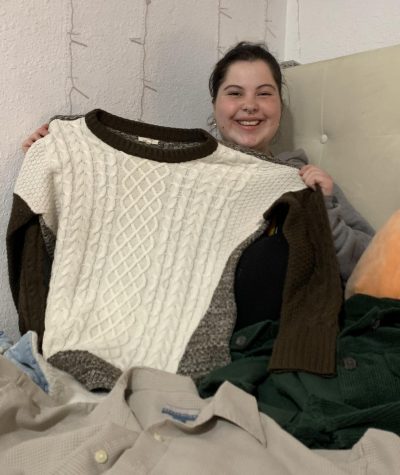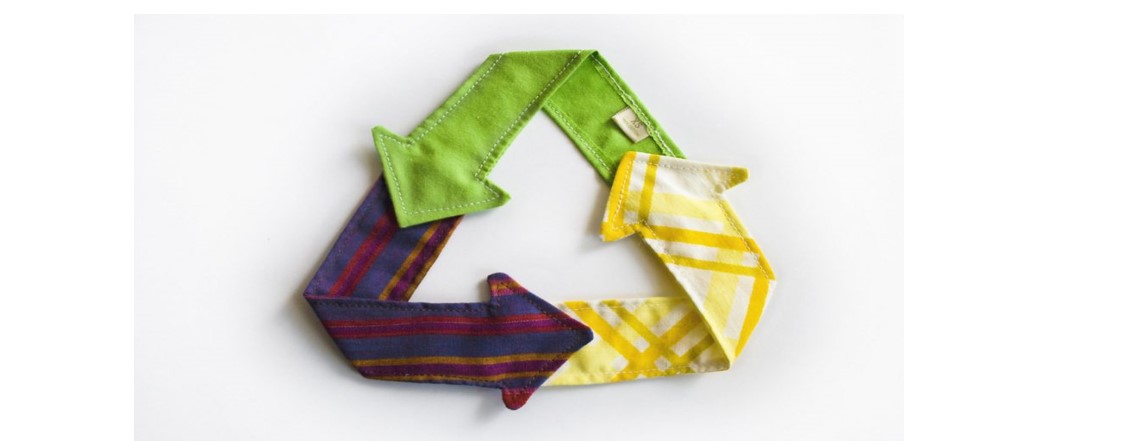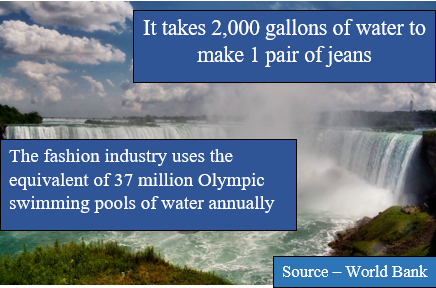Thoughtful thrifting: the art of shopping responsibly
Something as enjoyable as thrift shopping can also prove to have a positive impact on our environment.
November 16, 2021
In today’s tiktok-trendy-totally buggin fashion scene, clothing trends move faster than the speed of light for Generation Z. From “alt” looks with thick eyeliner and leg warmers to a soft Rory Gilmore aesthetic, complete with tights, cozy sweaters, and pleated skirts, fashion is more at the middle class’s fingertips than ever. For today’s average teens, fashion is one of the most important ways to express ourselves. And especially with such a fast scene, if kids want to dress to impress, they need to keep up. Unfortunately, in an oversaturated clothing market, most find themselves reaching for the cheapest garments, which lend themselves to being both unethical, and environmentally painful. Some especially trendy teens have found themselves searching for a solution to both problems without breaking the bank – thrifting. In order to understand why thrifting is a truly elegant solution, let’s take a look at a few not-so-fetch consequences of clothing overconsumption.
Fast Fashion
Online clothing stores such as Shein, Zaful, and Pacsun offer clothing at extraordinarily low prices. The lowest prices must be the best choice, figure most minimum-wage-earning high schoolers. Wrong. These cheap online stores utilize sweat-shop labor abroad, primarily in China to create cheap clothes that do not have significant labor costs. According to Forbes in the article “Shein: Is China’s Mysterious $15 Billion Fast Fashion Retailer Ready For Stores” by Mark Faithfull, Shein has become better at predicting trend cycles than even fast fashion giant Zaful. Shein has a notoriously young customer base that they target through Tiktok and Instagram advertisements primarily. Showcasing the trendiest clothing on prominent young celebrities such as Addison Rae has leapt them into stardom. The company uses multiple unethical practices to increase their profits including sweatshop labor, and poaching designs from independent companies. Vox notes Sheins clever marketing strategy of targeting socially active teenagers in the article “Shein is the future of fast fashion. Is that a good thing?” by Terry Nguyen. The brand targets teen micro-influencers and then makes them into brand advocates. Teens post in their Shein fits, telling others about where they purchased said items. They post funny Shein reviews, making fun of strange listings and the quality of items. They review their ‘shein hauls’ that show off shoddy consumerism. All of this, even when it is done ironically, furthers the brand’s success as a retailer. All publicity is good publicity, especially when it comes to profit.

Shein and other fast fashion retailers have a reputation for taking designs from small retailers. Lirika Matoshi, a Kosovo Albanian designer created the ever iconic Strawberry dress that added whimsy to the lives of “cottagecore” Americans during 2020, as noted by prominent fashion magazine Vogue. The stunning gown featured sparkling strawberries, puffed sleeves, and mounds upon mounds of tulle, straight out of a storybook or Anne of Green Gables. In the heat of the gown’s fame, fast fashion retailers including Shein rushed to create knockoffs of the ravishing dress. Even though most were taken down after a period of time in which the dress remained popular, some remnants can still be found. At the search of ‘strawberry dress’ on Amazon, hundreds of listings pop up, one boasting to be a “Mooua V-Neck Short Sleeve Dressrs for Women, Casual Sexy Strawberry Sweet Mesh Sling Strap Dress Pleated, Long Skirt”. If the misspelled title is not enough indication for you that this dress is not what it seems, look no further then Shein review sections for a look at this apparent lack of quality wholesale clothing. This thieving of designs crushes the creativity of young independent designers trying to find their footing on the runway. When young designers are pushed down, just as in any other art medium, creativity loses ground and the big players remain dominant, stifling the fashion scene. Luckily, due to the massive popularity of the gown, Matoshi remains standing, but most designers are not so lucky.

All of this leads to an answer to whether online shopping on shady retailers is ethical, and that answer is no. I am the lorax, and I speak for the fashion industry. If you absolutely must buy first-hand, make sure you are going to ethical businesses. Small businesses are always a safe bet, but if you aren’t sure, take a look at the about section of most clothing stores websites, and they will detail whether they have a solution for clothing waste, and where they get their labor from. If you won’t find an answer, take a pause before you purchase and question whether you could get the piece you want from other places. Even if you cannot afford designer or independent brands, you can still try your best to be mindful about the source of your clothing choices.
Environmental Waste
Barrages of trends create piles of clothing for poor little sea otters. Just imagine their little hands reaching for a clam to split only to find a discarded tube top in their grasp. Sad. But nothing is sadder than the non-dramatized effects of clothing overconsumption. Fast fashion retailers are active in creating a pollution riddled future. Some industries, such as oil and gas, are easy to spot when it comes to creating problems for our climate. But little do most of us know the harrowing effects the fashion industry has on our Earth. Though Shein’s website states that they are committed to zero waste fashion and accept donations at the rare “pop-up” shein events, the real killer isn’t the overconsumption, the true murderer is the fabric makeup of fast fashion clothing.
Clothing brands such as Shein, and even brick and mortar stores such as Ragstock, speak to a fabric composition of 95% polyester. Polyester, like other synthetic fabrics, is composed of plastic. This means that your Shein crop top will pull into smaller and smaller scraps until it creates microplastics which strangle our little fishy friends. As these microplastics become more concentrated in our Earth’s waters, they are more and more likely to make their way up the food chain and into our stomachs, with lasting implications for our species. In order to prevent the accumulation of microplastics, invest in clothing that is good for both style and our futures. Look for clothing with less elastic fabrics or invest in the community at your local thrift stores. Some environmentally friendly fabrics that won’t break the bank include cotton, wool, linen, and tencel(from wood pulp).
Guide to Thrifting
Though not all clothing can be purchased second-hand, do your best to invest in your community. Not only is thrifting good for the environment and laborers, it also is significantly less expensive. As a frequent shopper, I found that switching from mall shopping to thrifting halved my spending in as little as a month. Especially since I am not working full time, this allowed me extra cash to save for college. With all of this said, as an advocate for thrifting, be sure to remember who these retailers were created for. Thrifting stores such as Salvation Army, Savers, and Goodwill have their purpose in their names. To help save money for those who cannot pay full price. As you save your cash through hunting your local thrift nooks, remember to save some clothing pieces for those who truly need them, and never, ever buy more than you can wear. If you take excessive amounts of clothing from thrift stores(looking at you, depop fanatics) with the hope of reselling, it is both immoral and harmful to the businesses. By reducing clothing supply, you are heightening clothing prices at businesses meant for the less-fortunate. Then, those who need to thrift cannot afford the prices, and thrifting is ruined for us all. Not only that, if you sack thrift stores of all of their trendiest pieces, while donating nothing back, you are ruining the fun of thrifting and actively stealing from your own community.
With all of these things in mind, here are my top tips for thrifting trendy threads!
- Never purchase winter gear of any kind (Coats, Boots, Gloves)
- Leave behind professional attire (make your way to Kohl’s for interview clothes)
- Only purchase what you know you will wear! Anything that is a “maybe” is a no.
- Go through your clothing frequently for donatable pieces and sort them into garbage bags in your closet (Tops, pants, dresses, shoes, etc.)
- Bring any clothing or items you have to donate with in bags, to both give back and possibly receive a discount!
- Keep your and your friends’ sizes on hand (including shoes) so you can help each other.
- Go together! There is nothing more fun than going on a clothing scavenger hunt with your best friends.
- Give tailoring a try. Some of my favorite pieces I have added things to or cropped.
- Don’t be afraid of bold patterns or vintage pieces. If you truly want to be America’s next top model, you’re going to have to think outside the box! Sometimes a vintage belt or bold jacket adds the perfect flair.
- Take a look at unusual thrifting sections. For those who are more feminine, sometimes the men’s sections have incredible accent pieces, and get this, pockets. Feminine shoppers should also take a look at the kids section, as sometimes when the clothing is being sorted, a crop top may be thrown into the girls section by mistake.
With all of this in mind, I wish everyone who reads this very happy thrifting, and I hope you all find your very own treasures. Be sure to remember, fast fashion is not as fetch as it may appear, and on Thursdays, we wear thrifts.

